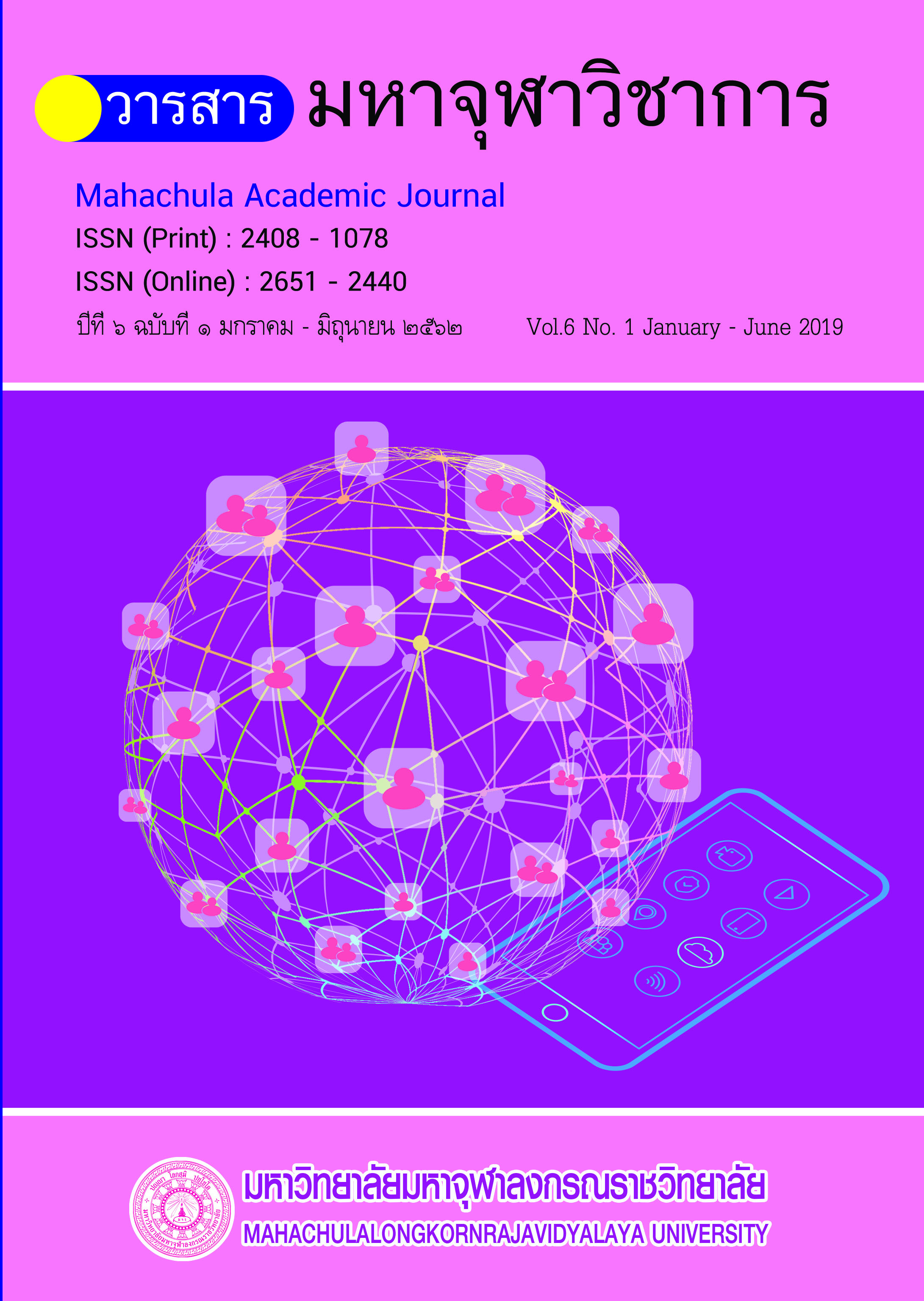An Analytical Study of Development of Tebhūmikathā in Thai Society Development of Tebhūmikathā in Thai Society
Main Article Content
Abstract
An Analytical Study of Development of Tebhūmikathā in Thai Society
Phramaha Somdeth Tapasilo (Srila-ngad)
Ph.D. Student of International Buddhist Studies College
Mahachulalongkornrajavidyalaya University, Thailand
Author for correspondence; e-mail: pmsomdeth@gmail.com
Abstract
The Objectives of this Dissertation are to study the background and the main contents of Tebhūmikathā, the development of Tebhūmikathā to Thai society, to analyze the knowledge development of Tebhūmikathā in Thai society of each period by three steps of methodology, namely collecting data, studying data and analyzing data.
The findings indicated that the word “Tebhūmikathā” or “Traibhum” means three realms or three worlds, namely [1] Kāmabhūmi (Sensuous realm), [2] Rūpabhūmi (Form realm) and [3] Arūpabhūmi (Formless realm), but, it has thirty-one worlds in details. Tebhūmikathā was divided into eleven parts; the last part refers to the Nibbana and the Path.
For the issue of development of Tebhūmikathā in Thai society, it was seen that it was practically applied and virtually developed to Thai society in various dimensions, namely, Buddhist arts as architectures, sculptures and paintings, political ideas, ethics and morality, and the concept of cosmology. From the past to the present (Sokhothai to Rattanakosin period), Tebhūmikathā is well known and widespread throughout Thai society. It makes a great importance in the development of Thai religious thought and practice. The knowledge of Tebhūmikathā was applied to Thai society from generation to generation in various ways, for example, Thai Buddhist arts, political ideas, principle of Ethics and morality cosmological concept. Even today this will be less influenced, but it still appears in religious arts and royal cremation ceremony, which influenced by the knowledge development of Tebhūmikathā, it believed that Semeru mountain is the center of universe.
Keywords: Tebhūmikathā (Traibhum), PhramahaDhammarājā (King Lithai), Thai Society


